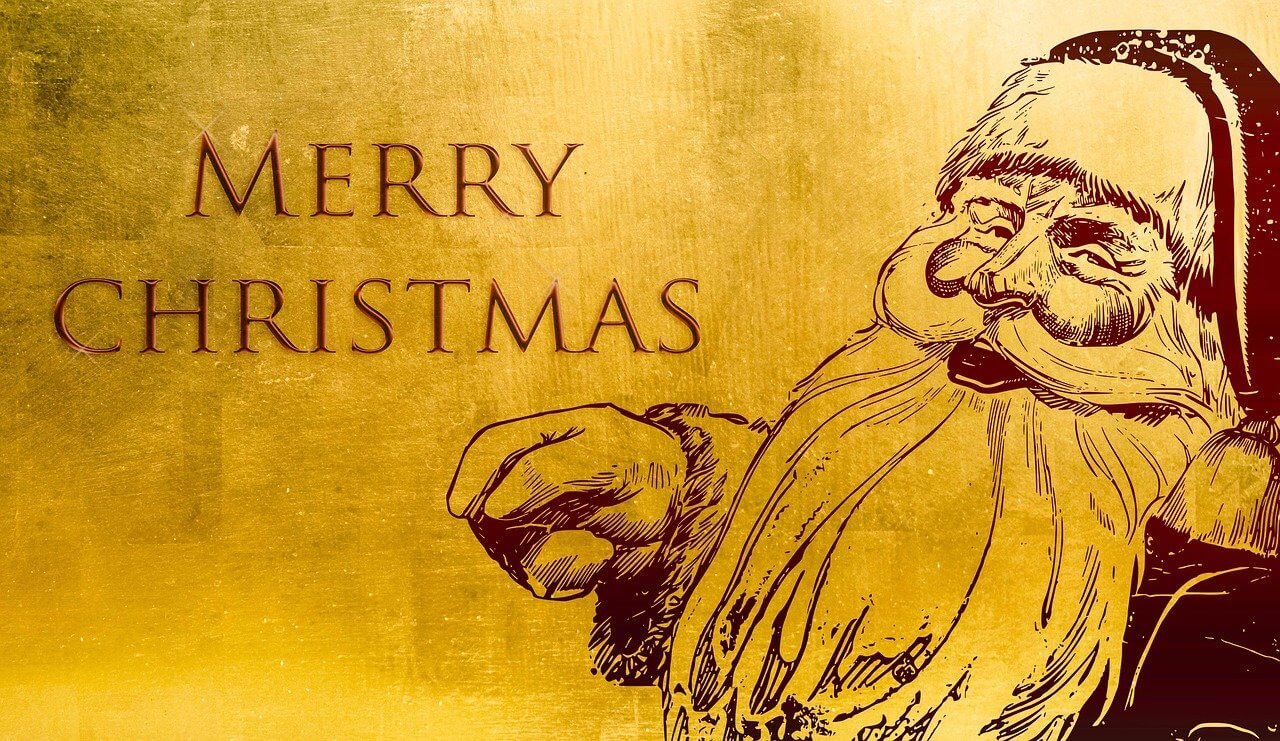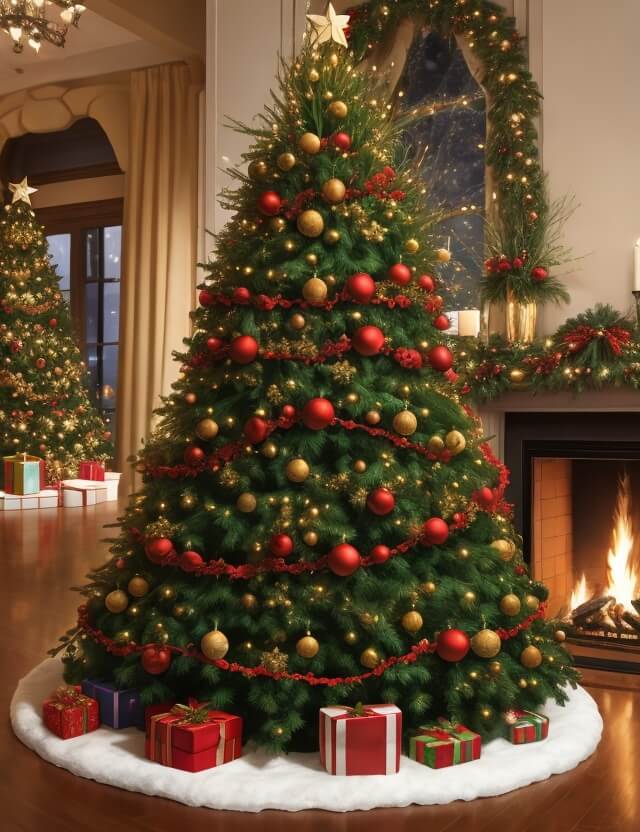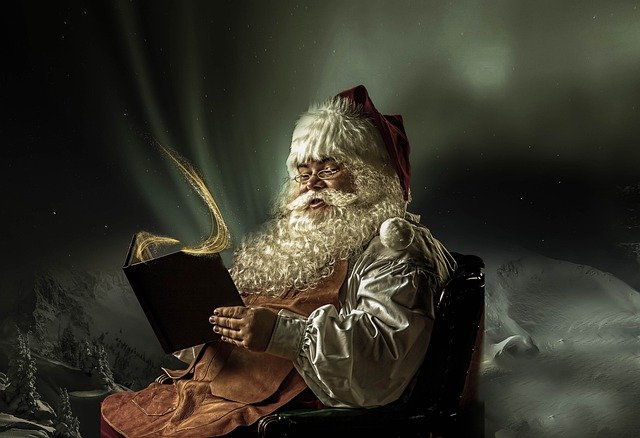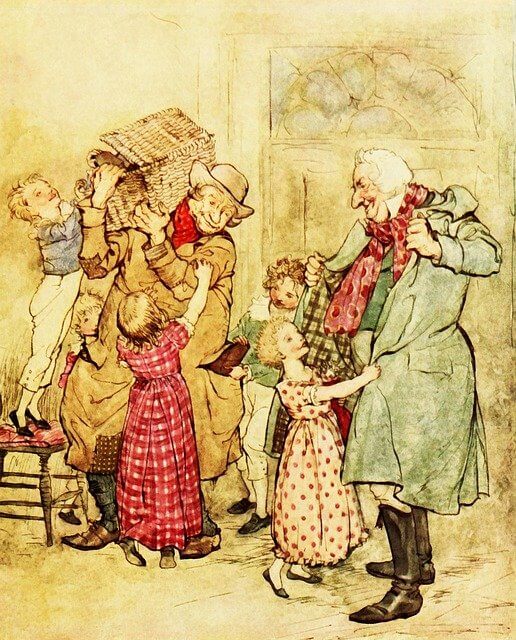Discover the fascinating origins behind beloved Christmas traditions, including the Nativity Scene, Giving Presents, Christmas Tree, Santa Claus, Mistletoe, and Yule Log. Uncover the historical and cultural roots that have shaped these cherished customs.
Christmas is celebrated worldwide with various traditions and customs that have evolved over time. While the origins of some of these traditions are not always clear-cut and may have multiple influences, here are some notable origins of common Christmas traditions:
- Nativity Scene: The nativity scene, depicting the birth of Jesus Christ, is a central element of Christmas celebrations. Its origins can be traced back to the early 13th century when Saint Francis of Assisi created the first live nativity scene in Italy. This act aimed to emphasize the humility and humanity of Christ’s birth.
- Christmas Tree: The tradition of decorating evergreen trees during the Christmas season has ancient roots. In pagan cultures, evergreen trees symbolized life and fertility during the winter solstice celebrations. The modern Christmas tree tradition gained popularity in Germany in the 16th century and was later introduced to England during the reign of Queen Victoria.
- Santa Claus: The figure of Santa Claus, known by various names worldwide, is based on Saint Nicholas, a Christian bishop from the 4th century who was known for his generosity and gift-giving. The modern image of Santa Claus as a jolly, rotund man in a red suit was popularized by 19th-century illustrations and the famous poem “A Visit from St. Nicholas” (commonly known as “The Night Before Christmas”).
- Christmas Stockings: The tradition of hanging stockings by the fireplace and filling them with small gifts can be traced back to a popular legend about Saint Nicholas. According to the story, Saint Nicholas once helped a poor man by secretly dropping a bag of gold coins down his chimney. The bag landed in a stocking that was hanging by the fireplace to dry.
- Mistletoe: Mistletoe has long been associated with various winter celebrations, including Christmas. In ancient Norse mythology, mistletoe was considered a plant of peace and love. It was also believed to have healing properties. The tradition of kissing under the mistletoe may have originated from ancient Celtic and Scandinavian customs and has evolved into a romantic gesture during the holiday season.
- Christmas Carols: The singing of Christmas carols has a rich history dating back centuries. The word “carol” originally meant a joyful dance or song. Early Christian carols were sung during pagan winter celebrations as a way to incorporate Christian themes into existing festivities. Over time, these carols became associated specifically with Christmas and evolved into the beloved songs we know today.
- Yule Log: The Yule log tradition has its roots in ancient pagan winter solstice celebrations. The Yule log, typically a large, specially selected log, was burned to symbolize the coming of light and warmth during the darkest days of winter. As Christianity spread, the Yule log became associated with Christmas and was often burned throughout the Twelve Days of Christmas.
These are just a few examples of the origins of common Christmas traditions. It’s important to note that many traditions have regional and cultural variations, and their origins can be influenced by a combination of factors, including religious, historical, and folkloric elements.

Nativity Scene
A nativity scene, also known as a manger scene or crib, is a depiction of the birth of Jesus Christ. It typically includes figures representing the baby Jesus, Mary (the mother of Jesus), Joseph (the earthly father of Jesus), shepherds, angels, the Three Wise Men or Magi, and various animals, such as sheep and donkeys.
The nativity scene is an important symbol of Christmas and is often displayed in homes, churches, and public spaces during the holiday season. It serves as a visual representation of the biblical story of Jesus’ birth as described in the Gospels of Matthew and Luke.
The origins of the nativity scene can be traced back to Saint Francis of Assisi, who is believed to have created the first nativity scene in the early 13th century. According to legend, Saint Francis wanted to bring the story of Jesus’ birth to life for the local community in Italy. He set up a live nativity scene with humans and animals in a cave-like setting to help people visualize and connect with the humble circumstances of Christ’s birth.
Over time, the practice of creating nativity scenes spread throughout Europe and became a popular Christmas tradition. Initially, they were often live reenactments, but later, figurines made of wood, clay, or other materials became more common. These figurines are arranged in a stable or manger setting, typically with a star representing the Star of Bethlehem overhead.
Nativity scenes serve as a reminder of the central message of Christmas—the birth of Jesus Christ and the hope and salvation that his coming represents for Christians. They are not only decorative but also hold deep religious significance, reminding believers of the humility, love, and divine nature of Jesus’ birth.
Christmas Tree
A Christmas tree is a decorated evergreen tree, typically an artificial or real pine, fir, or spruce tree, that is traditionally associated with the celebration of Christmas. It is one of the most recognizable symbols of the holiday season.
The tradition of using evergreen trees as part of winter celebrations predates Christianity. In ancient pagan cultures, evergreen trees were seen as symbols of life and rebirth during the winter solstice. The practice of bringing these trees indoors and decorating them was a way to celebrate the coming of spring and the continuity of life.

The modern tradition of the Christmas tree as we know it today is believed to have originated in Germany in the 16th century. Devout Christians brought trees into their homes and decorated them with candles, apples, nuts, and other ornaments. The use of candles was eventually replaced with electric lights for safety reasons.
The popularity of Christmas trees spread throughout Europe and eventually to North America in the 18th and 19th centuries. In the United States, the Christmas tree tradition was popularized by German immigrants, particularly through the influence of Queen Victoria and Prince Albert, who were known to have a decorated Christmas tree at Windsor Castle.
Decorating the Christmas tree has become a cherished family activity. Common decorations include lights, tinsel, garlands, ornaments, and a tree topper, such as a star or an angel. The tree is often placed in a prominent location, such as the living room, and becomes a focal point of holiday decorations.
The Christmas tree represents life, hope, and joy during the winter season. It is a symbol of togetherness and tradition, bringing families and communities together to celebrate and create cherished memories. The tree’s evergreen nature also symbolizes the eternal life offered through Jesus Christ in Christian traditions.
Santa Claus

Source : pixabay.com
Santa Claus, also known as Saint Nicholas, Kris Kringle, or Father Christmas, is a legendary figure associated with Christmas. He is depicted as a jolly, rotund man with a white beard, dressed in a red suit, and often depicted carrying a sack of gifts. Santa Claus is one of the most beloved and recognizable figures of the holiday season.
The modern image of Santa Claus has evolved from various sources and legends over the centuries. The character of Santa Claus is based on Saint Nicholas, a Christian bishop who lived in the 4th century in what is now modern-day Turkey. Saint Nicholas was known for his generosity and love for children. He became famous for his secret gift-giving, particularly to those in need, which eventually led to him being associated with Christmas.
The Dutch tradition of Sinterklaas (Saint Nicholas) played a significant role in shaping the modern Santa Claus. Dutch settlers brought the tradition to America, and over time, it merged with other cultural influences to create the iconic figure we know today.
The poem “A Visit from St. Nicholas,” more commonly known as “The Night Before Christmas,” written by Clement Clarke Moore in 1823, also contributed to the popular image of Santa Claus. The poem describes Santa Claus as a jolly, magical figure who delivers presents on Christmas Eve with the help of his reindeer and sleigh.
The modern portrayal of Santa Claus as a giver of gifts to children worldwide has been popularized by advertisements, literature, and media. The concept of Santa Claus living at the North Pole, having a workshop with elves who make toys, and traveling around the world in one night on Christmas Eve to deliver presents is a product of storytelling and imagination.
Today, Santa Claus is a central figure in many Christmas traditions, particularly in Western cultures. Children often write letters to Santa Claus, expressing their Christmas wishes and leaving cookies and milk for him on Christmas Eve. Santa Claus is believed to visit homes during the night, coming down the chimney to leave gifts for children who have been good throughout the year.
Santa Claus embodies the spirit of generosity, love, and joy associated with Christmas. He represents the joy of giving and the magic of the holiday season, bringing happiness and excitement, especially to children.
Christmas Stockings
Christmas stockings are a traditional part of Christmas celebrations, particularly in Western cultures. A Christmas stocking is a large sock or fabric bag, often in the shape of a boot, hung by children or adults in anticipation of receiving small gifts or treats from Santa Claus on Christmas Eve.
The origin of the Christmas stocking tradition is believed to have several possible origins. One popular legend dates back to the story of Saint Nicholas. According to the legend, Saint Nicholas learned about a poor man who had three daughters but could not afford dowries for them. Saint Nicholas wanted to help, so he dropped bags of gold coins down the chimney of the man’s house. The bags of gold coins landed in the stockings that were hanging by the fireplace to dry. This act of generosity led to the tradition of hanging stockings for Santa Claus to fill with gifts.
Another legend traces the tradition back to the story of the Three Wise Men or Magi. According to the story, they followed the Star of Bethlehem to find the baby Jesus and presented him with gifts. The Magi left behind some of their gifts, such as gold, frankincense, and myrrh, which were later discovered by Mary and Joseph. These gifts were said to have been placed in the stockings that were hung by the fireplace to dry.
Over time, the practice of hanging stockings became associated with Christmas. Today, it is a cherished tradition for many families. Stockings are typically hung on or near the fireplace, with each family member having their own stocking. In some cases, people use special decorative stockings specifically designated for Christmas.
On Christmas Eve, children often go to bed with excitement, anticipating the arrival of Santa Claus. It is believed that Santa Claus enters the house through the chimney and fills the stockings with small gifts, treats, and sometimes an orange or other fruits. These gifts are typically opened on Christmas morning, adding to the joy and excitement of the holiday.
Christmas stockings represent the spirit of giving and receiving during the holiday season. They add an element of surprise and delight, especially for children, who eagerly await the surprises that Santa Claus has left for them.
Mistletoe

Mistletoe is a plant that holds a special significance during the Christmas season. It is a parasitic plant that grows on the branches of various trees, such as apple, oak, and pine trees. The tradition of hanging mistletoe and kissing underneath it is a popular Christmas custom in many Western cultures.
The association of mistletoe with Christmas dates back to ancient times. The plant was regarded as sacred by several cultures, including the Druids in Celtic traditions. It was believed to have mystical properties and was associated with fertility, healing, and protection against evil spirits.
The specific tradition of kissing under the mistletoe during the holiday season has its roots in Norse mythology. According to a popular Norse legend, the god Balder was killed by an arrow made of mistletoe. Balder’s mother, the goddess Frigg, was so distraught that her tears turned the red berries of the mistletoe white. Frigg declared that the mistletoe would never again be used as a weapon and that anyone standing beneath it should receive a token of love rather than harm.
Over time, the tradition evolved into the custom of hanging mistletoe in homes during Christmas, where it became a symbol of peace, love, and goodwill. The practice of kissing under the mistletoe began in England during the 18th century and gained popularity in the United States and other countries. It became a lighthearted tradition where, if two people found themselves standing beneath the mistletoe, they were expected to exchange a kiss.
The tradition of kissing under the mistletoe is often seen as a playful and romantic gesture during the holiday season. It has become a symbol of affection and the joyous spirit of Christmas. While the custom varies in different regions and cultures, the presence of mistletoe continues to add a touch of fun and romance to holiday celebrations.
Christmas Carols

Source : pixabay.com
Christmas carols are special songs that are sung or played during the Christmas season. They are a cherished part of holiday traditions and are often associated with joy, religious themes, and the spirit of Christmas.
The tradition of singing carols during Christmas has its roots in medieval Europe. Carols were initially religious songs or hymns that were sung during Christian celebrations, including Christmas. They were often performed during church services or as a way for communities to celebrate the birth of Jesus Christ.
Over time, Christmas carols became more popular and spread beyond church settings. They evolved to include a mix of religious and secular themes, expressing joy, peace, love, and the festive spirit of the season. The melodies and lyrics of many carols are passed down through generations, with some traditional carols dating back centuries.
Some of the most well-known Christmas carols include “Silent Night,” “Hark! The Herald Angels Sing,” “O Holy Night,” “Deck the Halls,” “Joy to the World,” “O Come, All Ye Faithful,” “Away in a Manger,” and “Jingle Bells.” These carols, along with many others, are sung in various languages and musical styles around the world.
Christmas carols are often performed by choirs, musicians, and carolers who go door to door or sing in public spaces. Many people also enjoy singing carols at home with family and friends, during church services, or at community gatherings. The melodies and lyrics of carols are known to evoke a sense of nostalgia, joy, and the warm spirit of Christmas.
In addition to their musical beauty, Christmas carols often tell the story of Jesus’ birth or capture the festive atmosphere of the holiday season. They are a way to celebrate and share the Christmas message, as well as to bring people together in the spirit of unity and joy during this special time of year.
Yule Log

The Yule log is a tradition associated with Christmas and the winter solstice in many European cultures. It has its roots in pagan rituals and symbolizes the warmth, light, and renewal of the coming year.
The Yule log traditionally consists of a large, carefully selected log, often from an oak tree, that is chosen and brought into the home or community gathering place. It is typically burned in a fireplace or hearth during the Christmas season, particularly on Christmas Eve or on the winter solstice, which is the shortest day and longest night of the year.
The burning of the Yule log is accompanied by various customs and beliefs. It is often lit with the remains of the previous year’s log, symbolizing the continuity of the cycle of life and the passing of the old year into the new. The log is lit with great ceremony and is intended to bring light, warmth, and good fortune to the household or community.
As the Yule log burns, people may gather around it to sing carols, tell stories, or exchange gifts. The log is allowed to burn throughout the night, and it is believed to ward off evil spirits, bring blessings to the home, and ensure a prosperous year ahead.
In some traditions, a small piece of the burnt Yule log is kept and saved until the following year. This piece is believed to protect the home from fire, lightning, and other dangers.
The Yule log has evolved over time, and today, it is often represented symbolically rather than using an actual log. Many households have a Yule log-shaped cake or dessert that is enjoyed during Christmas celebrations. Some also display decorative Yule log ornaments or candles as part of their holiday decorations.
The Yule log tradition is a reminder of the ancient roots of winter celebrations and the symbolism of light and warmth during the darkest time of the year. It represents hope, renewal, and the anticipation of the coming year’s blessings and abundance.